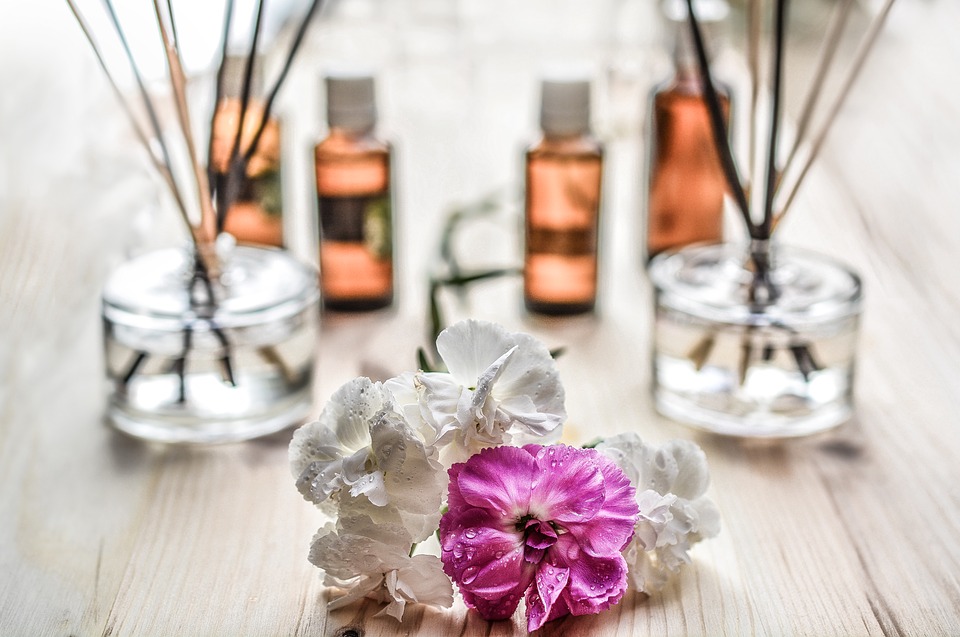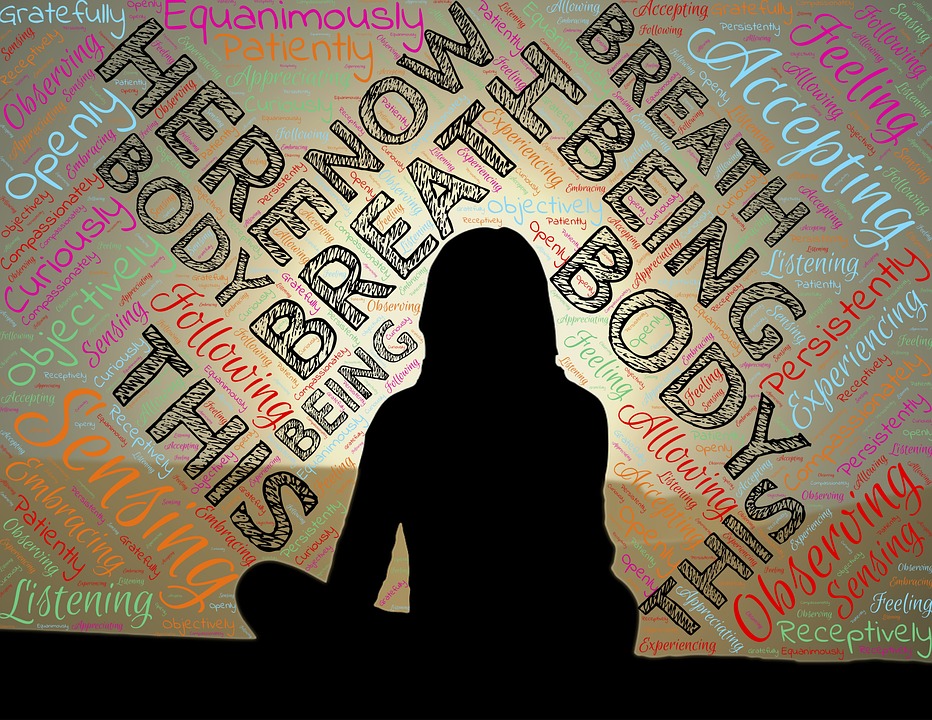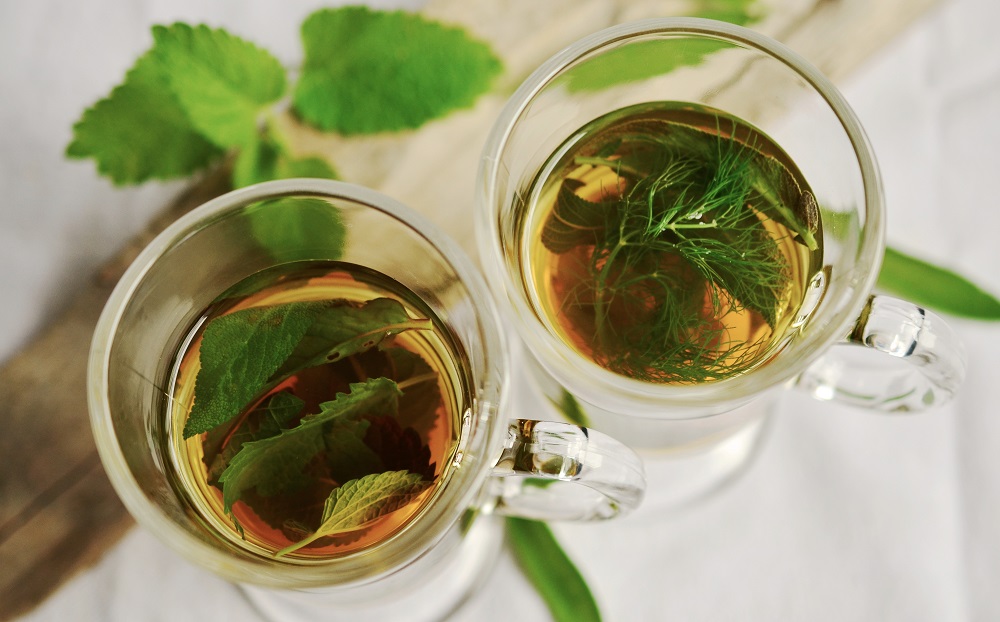Suma
About Suma
When not writing, Suma can be found ambling on sidewalks, at the movies, doing yoga, or cooking a wholesome meal. When not doing any of these, Suma writes.
Posted by
Suma | Posted on 07/21/17 | No Comments
Emotional eating or binge eating disorder is defined as an eating disorder “where you frequently eat large amounts of food while feeling powerless to stop and extremely distressed during or after eating. Binge eating disorder typically begins in late adolescence or early adulthood, often after a major diet.”
From HelpGuide.org:
“All of us eat too much from time to time. But if you regularly overeat while feeling out of control and powerless to stop, you may be suffering from binge eating disorder. You may eat to the point of discomfort, then be plagued by feelings of guilt, shame, or depression afterwards, beat yourself up for your lack of self-control, or worry about what compulsive emotional eating will do to your body. As powerless as you may feel about your eating disorder, it’s important to know that binge eating disorder is treatable. You can learn to break the binge eating cycle, develop a healthier relationship with food, and feel good about yourself again.” One of the first steps to take is to recognize you may have an eating disorder, and that may well be the toughest thing in this emotional battle against food. Recognizing and appreciating food as a means of nutrition for our bodies to function well is imperative. For those who are suffering from emotional eating, mindful eating is really hard to even consider, let alone master. Food for such people is more a crutch against the crippling feeling of helplessness, invalidation, and utter removal from the world around them. Some of the key symptoms of emotional eating are:
- Eating large servings of food
- Eating in secrecy, where you feel safe, away from the prying and judging eyes of the world
- Eating without gaining any enjoyment from the food
- Eating frequently even though you may not be feeling hungry
- Eating as a means to belong to a conversation
- Eating as a means to remove yourself from a social gathering
- Eating out of guilt or a sense of feeling sorry for yourself
- Feeling stressed and resorting to eating as a way to overcome it
- Feelings of alienation and embarrassment
- Never feeling satisfied, however much you eat
- Constantly fretting about new diets to try
- Eating healthy in company but gorging on unhealthy food when alone
- Feelings of inadequacy
- Harsh self judgement
- Hiding food out of a fear of being judged
- Feeling numb when bingeing
Do you recognize any of these symptoms? Do these manifest in you once in a while? Have you ever had the feeling that you may have reached for food out of a need to correct something else in your life that was troubling you? Remember, the first step is admitting it to yourself.
Given all these, what can you do to address this and how do you work through it to come to that point of enjoying food as a means of nutrition? Here are some tried and tested ways you can begin to heal yourself and practice self love. To begin mindful eating, make a note of these, tack it on to your fridge door, and look at it every time you feel like opening the door for that tub of ice cream in it.
- Maintain a food diary: Record every single thing you eat in this diary from your first bite or cuppa in the day to your last late night snack. Also make a note of where you were around each meal time, who you were with, what kind of a situation it was in terms of stress that it caused you. Pretty soon, you will see a pattern emerge. You will have eaten the unhealthiest of foods around those times where you felt helpless or angry.
- Control your stress: Practice mindful meditation, deep breathing, relaxation yoga — all of those that we endorse here on the blog.
- Form or Join a Binge Eaters Support Group: A strong support network of family and friends is key to staying on the track of mindful eating.
- Recognise the signs: Tack another note onto your fridge of all the emotions that send you spiralling towards junk food. If any of those look back at you from the fridge, walk away. Take a walk instead, or listen to a song, or pick up the phone for a conversation with someone you love.
- Banish temptation from your fridge and pantry: Get rid of all the processed foods in your kitchen. And then stock up on only healthy foods like vegetables, fruits, nuts, etc.
- Be Kind to Yourself: Every time you do give in, and you will give in a few times while being mindful, learn from the setback and make a note to not do it again. Reward yourself for not giving in with something other than food. And if you do give in, affirm your commitment to mindful eating once again. And practice a great amount of self love.
Posted by
Suma | Posted on 07/20/17 | No Comments

We’ve all been there where we’ve needed self love. Sometimes, the world makes it difficult to just be. We are constantly caught in a battle between loving ourselves and loving the world. Are the two mutually exclusive? No, they don’t have to be. But sometimes, this can seem to be the case. Caught up in our daily lives of work and school and family and relationships, making some me-time might seem to be the most difficult task. Self love indeed begins with carving out me time, And no, it is not selfish to practice self love, self care and self compassion. From FitHealthy365: “Making time for yourself is hard. I get it. For whatever reason (I’m sure there are many) we put others and doing things for others ahead of ourselves. Here’s the thing, we aren’t doing ourselves or those around us any favors. Sure, in the short-term it’s manageable, but what’s the cost? Are you as happy as you could be? Are you as fit or healthy as you could be? What example are you setting for your kids, if you have them? It’s not about being selfish. Not by any means. It’s about taking time for YOU to relax and rejuvenate. We give of ourselves so much, it’s important to take time to refuel”.
And one of the nicest ways to practice self love is to get wisdom from those who’ve been there, done that, and have recorded their thoughts into a book. Yes, that’s right – self love books are necessary and should have their pride of place on your bookshelf. Here, we pick out ten of our favorite self love books, and give you some quotes from them. Pick up one – pick them all up – and carry them with you for when you need to be reminded how important you are to yourself.
- The Gifts of Imperfection: Let Go of Who You Think You’re Supposed to Be and Embrace Who You Are by Brene Brown(PhD, Leading Expert on Shame, Authenticity, and Belonging)
From the book: “No matter what gets done and how much is left undone, I am enough, and to go to bed at night thinking, Yes, I am sometimes afraid, but I am also brave. And, yes, I am imperfect and vulnerable, but that doesn’t change the truth that I am worthy of love and belonging.”
2. You can Heal Your Life by Louise L. Hay: This one’s a classic and has been the go-to self love and self healing book for generations.
From the book, one of my favorite quotes of all time: “Remember, you have been criticizing yourself for years and it hasn’t worked. Try approving of yourself and see what happens.”
3. Beautiful You: A Daily Guide to Self Acceptance by Rosie Molinary (Author, Speaker, and Teacher)
The author encourages journaling as a means to connect with your deepest self to begin the process of self acceptance and self love.
From the book: “With journaling, you see the patterns of your life; you claim or reclaim who you really are; you coach yourself into becoming the someone you imagined; you arrive at a sense of balance, of yourself, of wholeness. You can discover productive patterns and non-productive patterns in your life, and you can choose to embrace the ones that move you forward.”
4. The Happiness Project: Or Why I Spent a Year Trying to Sing in the Morning, Clean My Closets, Fight Right, Read Aristotle, and Generally Have More Fun by Gretchen Rubin
This one has to be one of our all-time favorites, and a crowd favorite, for the tone and voice, and for exhorting us to live simpler lives by just practicing minimalism in everything but happiness.
From the book: “The belief that unhappiness is selfless and happiness is selfish is misguided. It’s more selfless to act happy. It takes energy, generosity, and discipline to be unfailingly light-hearted, yet everyone takes the happy person for granted. No one is careful of his feelings or tries to keep his spirits high. He seems self-sufficient; he becomes a cushion for others. And because happiness seems unforced, that person usually gets no credit.”
And this home truth: “The days are long, but the years are short.” Say it, girl!
5. Eat, Pray, Love by Elizabeth Gilbert
This book has to be the one that spurred the me first movement amongst women all over the world. A story told in the most engaging of styles, this confessional slash travelogue slash memoir has to be credited with removing the stigma that comes with practicing self love.
From the book: “I think I deserve something beautiful.”
Yes, please.
Posted by
Suma | Posted on 07/19/17 | No Comments
Why is it so tough to relax before bed? Have all generations leading up to now had similar issues? It seems that the modern age has all but stripped us of the ability to fall asleep at night. We are now better connected than ever before with people scattered all over the world. Constant Facebooking, looking for WhatsApp updates, waiting for that phone call from a different time zone, watching a football game being played in a different time zone, and not rising with the sun as a result of it. We seem to have walked straight into zombie land from woke land, if you please.
Why can we not seem to catch a break? We know all the diktats of “switching off” prior to sleep: turn off the telly and the phone, mute your lights to a dull yellow, read a book, avoid the white glare of a computer screen, darken the bedroom, etc. But even with all those sleep-friendly tips and tricks, we seem to hit mounting sleep debt month on month. Given that, are there ways and means to actually relax before bed? What are some good sleep habits that we can follow to get a sound night’s sleep when we need it? Here are some tried and tested ideas to relax before bed. Try one, try them all – anything for a good night’s sleep, yes?
- Chamomile tea: Drink a cup of chamomile tea at night. Chamomile tea has naturally occurring melatonin, a supplement prescribed for insomniacs. This gentle sleep aid is popular the world over as a surefire way to relax before bed. For best benefits, drink at least an hour before bed. You will find yourself slipping into a natural stupor that doesn’t feel drug-induced about 30-40 minutes after drinking it.
- Lavender Oil: Yup, that’s right. Make your own lavender spray, and spritz some on your pillowcase just before you sleep. Or dab a few drops of lavender essential oil on your pillowcase/temples. Lavender calms the mind and induces a feeling of lightness.
- Take a hot bath: No, not a hot shower. A proper soak in the tub with some Epsom salts, a few drops of any of our favourite stress relief oils, some rose petals, and an eye gel pack. The change in temperature induces stupor, as it relaxes muscles and joints and relieves stress. Remember to not take a hot shower, though. That can make you want to hit the gym, or worse still, work on your computer.
- Eye gel pack, or used tea bags for the eyes: Have an eye gel pack in your refrigerator always ready. A cold eye pack can help soothe the nerves around the eyes, and give welcome respite to our open eyes. Sometimes, when we struggle to fall asleep, we notice our eyes are open, even though our brains are ready to shut down. Gently nudging the eyes to close this way can help. If you don’t have an eye gel pack handy, store those used chamomile tea bags in the fridge for a few minutes between drinking the tea and getting ready for bed. Use chamomile tea bags make for a great makeshift eye pack.
- Shavasana: Get into the corpse position. Either count sheep, count backwards from 100, or slowly count your own breaths, backwards from 25 or 50. Gently guide your body to relax with your mind. In those few minutes of silence, as your breathing regulates and deepens, your mind will quieten, and your brain will switch off. Sleep will follow.
- Stretches: Here are some yogic stretchesyou can try to relax before bed. Alternatively, lean forward, bend down, and let your arms hang by the sides of your body. Sway side to side for a few minutes.
- Meditate: Always the answer. For anything and everything.
- Glass of warm milk with honey: Your mother wasn’t wrong. Because mothers are never wrong. A glass of warm milk with honey is rich in B-12, a vitamin required for metabolism and sleep. Pro tip: don’t drink hot chocolate.
- Get your partner to give you a gentle back rub: Because when has that not worked? Sometimes, we tend to carry the day’s stress in our trapezius – the shoulder muscle. You will notice that where you carry the burden the most is in between your shoulder blades. This causes most of the muscles along the spine to tighten and strain in response. A back rub (preferably with lavender-scented body oil) can help you relax into sleeping.
- Listen to instrumental music: Listening to the gurgle of a stream, or pan flutes echoing somewhere up in the mountains, helps me relax before bed. Choose a number that you know will calm you down. Try and avoid songs – once your mind starts singing along, it will find it hard to relax.
Posted by
Suma | Posted on 07/18/17 | No Comments
Are there concrete benefits to sleeping on the floor than on a mattress? On an average, we sleep about 7-8 hours every day. And after a long day of being on our feet, with backs straight and necks up, our spines need some respite. Come evening, and we find ourselves craving the softness of our mattresses on which to lay down our weary backs. All the posturepedics an tempurpedics out there might not be as beneficial to the spine as the hard floor, some say.
We do a deep dive into the four most touted benefits of sleeping on the floor.
1. Sleeping on a hard surface helps with realignment of the spine: We depend on our spine for everyday activities more than we think we do. Reaching for a cup of coffee? Spine. How about offering a handshake? Spine? Someone calling out to you from behind? Twist your spine. The roar of the airplane overhead? Look up – spine. Who is that in the distance? Could it be someone you know? Crane your neck – spine. Laugh at a joke someone made during a water cooler conversation? Head bops in agreement – spine. We use the spine more than we think. And experts say that lying flat on the floor might actually be good for us in that it helps the spine realign to perform optimally the next morning. This natural spine adjustment– from all the vertebrae to the muscles, nerves, and soft tissue – all get the support they need to readjust to another day of twisting, contorting, and torqueing.
2. Better respiration and blood circulation owing to corrective ergonomics: After a long yoga workout, you will have done the corpse pose or the shavasana. And if you do not have your yoga mat, you will have lain in position on the floor. Examine your breathing patterns the next time. Owing to the posture of being one with the ground, your lungs expand better, allowing for more oxygen to enter the body. This has the added benefit of improved blood circulation, thanks to all the extra oxygen your lungs have taken in. Think of sleeping on the floor as the ergonomics for sleep – just like we need a good chair at work, we need good ergonomics for the back while resting as well.
3. Improved sleep and sleeping patterns: The postural correction, and the subsequent improvement in breathing, has one of the best advantages that we all need: better sleep. As the body relaxes into a supine position, with none of the elevation from a mattress or a pillow, it eases into a natural state of physicality. And we all know deep breathing helps alleviate sleep issues like insomnia and sleep apnoea. Over a period of time, the spine goes back into its natural curve, erasing years of bad posture, sedentary lifestyles, and stress on the joints. On a psychological level, this may also benefit those that are lacking in confidence and self-esteem. All the benefits put together – including better posture, better sleep, and better breathing – may also help those that are prone to anxiety or panic attacks.
4. Greater awareness during wakeful hours and better tolerance of joint pain: Joint conditions like arthritis, tendonitis, or spondylosis are common nowadays. Sleeping on the floor has helped some patients respond better to chronic pain and joint ailments. This is what Jeff Scheuer has to say about the benefits of sleeping on the floor on Quora: “Finding the proper sleep surface is a very subjective experience. With that being said, if a surface is too hard you risk pressure point development and potential decreased blood circulation. If you are a stomach sleeper, a harder surface is usually more appropriate than a softer surface. As far as pillows, maintaining proper cervical alignment is key. Generally – thicker for a side sleeper, medium for a back sleeper and thinner for a stomach sleeper.”
That said, do your homework before deciding on sleeping on the floor tonight. In traditional cultures, adults sleep on mats, the floor, or a hard cot, as opposed to soft mattresses in western cultures. But that doesn’t mean that you will have to take for granted that the floor is the best surface to sleep on. It might not be the best idea if you already have back and spine issues like lumbago, scoliosis, and chronic back pain. If you are looking for solutions to already existing spine issues, it’s best to consult a specialist. You could also start out with a firm mattress instead of a soft one to see how your body responds to the change.
Posted by
Suma | Posted on 07/17/17 | No Comments
If you are over thirty, or have a chronic digestive condition, you will have lived through a juicing detox. Legend had it that juicing helped make the micronutrients in vegetables and fruits easily bio-available to the human body. Before we reached for the multivitamins, we would have been told to try a juicing regimen first. Watching the juicer get through the slush and pulp to give you pure fruit and vegetable juice in all those colours probably felt like a gift from the gods.
But that was the traditional mindset. Current opinion is that a juicing detox might be more harmful than beneficial, especially if the intake is restricted to fruit. Fruit contains fructose, a simple sugar, and latest research seems to indicate that a pure shot of fructose might actually promote fat gain. From the Mayo Clinic website: “Some juicing proponents say that juicing is better for you than is eating whole fruits and vegetables because your body can absorb the nutrients better and it gives your digestive system a rest from working on fiber. They say that juicing can reduce your risk of cancer, boost your immune system, help remove toxins from your body, aid digestion and help you lose weight. However, there’s no sound scientific evidence that extracted juices are healthier than the juice you get by eating the fruit or vegetable itself.”
Besides, traditional juicing gets rid of the most essential ingredient from vegetable and fruit: fiber. Most nutritionists and dietitians recommend at least 25-30 grams of fiber in our daily diet, which aligns with the 3 servings of fruit, and 5 servings of veggies per day dictum. There are benefits to a juicing detox that are unquestionable: it is a shot of essential vitamins, minerals and other key phytonutrients that are essential for body function. However, to get that benefit, there is no point in throwing out the fiber, an essential component for gut health, regular bowel movements, weight loss, and for steady cholesterol in the body. Juicing detox is great as long as you also use the fiber from the produce.
Blending Detox v/s Juicing Detox: Which is better?
Blending. Absolutely. Don’t give up on that fiber. Here is what FoodMatters.comhas to say about the benefits of blending: “Unlike juices, smoothies consist of the entire fruit or vegetable, skin and all and contain all of the fiber from the vegetables. However, the blending process breaks the fiber apart (which makes the fruit and vegetables easier to digest ) but also helps create a slow, even release of nutrients into the blood stream and avoids blood sugar spikes. Smoothies tend to be more filling, because of the fiber, and generally faster to make than juice, so they can be great to drink first thing in the morning as your breakfast, or for snacks throughout the day.”
Here are some of my smoothie recipes for you to try. I usually have a whey protein shake with berries after my workout, but I love mixing up different fruits and vegetables into a thick smoothie with some healthy fat in it like a tablespoon of coconut oil or almond oil for an instant pick-me-up. All natural, easy to carry smoothies and juicing recipes that you can make in a jiffy, with no added sugar.
- Cucumber Melon Cooler: 1 cucumber; a few sprigs of mint; 1 slice honeydew melon; juice of one lemon (or two, if you like it citrusy like I do); beet greens, cleaned; a big bunch of cilantro or celery leaves; 1/2 inch piece of ginger; ice cubes; cold water as needed. Grind everything first, then slowly add water and blend again to get this gorgeous green smoothie that works wonders for your skin and hair. Makes two servings.
- Kale-ing me Softly: 1 big robust bunch of kale, trimmed; 1/2 bunch of chard or spinach; 1/2 granny smith apple; 1 cutie or mandarin orange; 1-2 carrots, grated; juice of two lemons (vitamin C is everything!); ice cubes. First, chop up the kale and blend into pulp with the spinach or chard. Then add the chopped fruit and carrots, and the lemon juice. Blend, use water if needed. Makes 2-3 servings.
- Winter Squash Lassi: 1 cup of winter melon or squash, cubed (the white kind – all fiber, no sugar); 1 bunch of cilantro; 1 bunch of mint; 1 bunch of curry leaves (if you can get them where you live – rich in vitamin A, great for eyesight and hair); 1/2 inch galangal; zest of two lemons; 1 cup of yogurt or coconut yogurt; ice cubes. Just blend the whole shebang in your Nutribullet, sprinkle a dash of salt if inclined, and drink on a hot summer day for an instant supply of electrolytes. Makes 3-4 servings.
- Mint Chocolate Low Carb Smoothie: 1 avocado, cubed; a big bunch of mint, cleaned; dark cocoa powder or cacao nibs; 2 drops of stevia; ice cubes; 1-2 tablespoon coconut oil; powdered cinnamon; 1 vanilla bean, scraped; 1 cup coconut milk. Blend into this gorgeous chocolatey, minty smoothie that will take you down memory lane sans carbs. Makes 2-3 servings.
Posted by
Suma | Posted on 07/16/17 | No Comments
You will have heard of aromatherapy being an effective remedy for stress — in fact, de-stressing with stress relief oils is probably one of the most popular methods to combat stress and relieve anxiety. Stress relief oils are a gloriously aromatic way to decompress.
The most common ways to use them are in electric diffusers and reed diffusers. The second most common method is scented candles. Lighting a lemon verbena candle after a long day at work, or a lavender lilac scented one in the bathroom as you slip into the tub for a long soak is something we all do. Another aromatherapy method is to use a spray that has the right mix of oils and spritz it on your pillow. Lavender has been found to specially helpful to help you relax and sleep better. Added to this, you could also carry a helpful roll-on that sits discreetly inside your purse and rub a few drops on your temple on those high pressure days at work. And for decades, scented potpourri has been a favourite in living rooms all over the world.
Stress relief oils help you unwind and focus more on your inner calm. In tense situations, cortisol runs roughshod through your system, causing our jaws to clench, muscles to strain or tighten, and our blood pressure to rise. All of this, added to any external cause such as an irate boss, a rude store assistant, or just bad weather, can weigh you down and make you internalize the feeling of stress more so than usual. Aromatherapy works on one of your key senses, i.e., the sense of smell. The aromatic molecules directly impact your brain, helping your nervous system to calm down from the inside. Sounds amazing, doesn’t it? And it works!
Stress Relief Oils: My Top Picks
Lavender oil: This is a no-brainer. The health benefits of lavender oil are numerous, stress relief being the top benefit. Lavender oil has been proven to help alleviate tension, provide relief from pain, to treat respiratory issues, as also combat blood stagnation. Added to this, lavender, along with tea tree oil, has been found to be a great skin and scalp disinfectant. This is my top pick for when I feel a panic attack coming on, or if I am dealing with a persistent bout of insomnia, and it hasn’t failed me so far.
Bergamot oil: Dr. Mercola has this to say about bergamot oil: “More than just offering a familiar scent or flavor, bergamot oil is bursting with a powerhouse of benefits.Bergamot has an uplifting aroma that makes you feel you are walking through a lemon orchard. This has both stress relief benefits as well as energizing benefits, helping you to focus on the positive. Bergamot’s unique scent combination of being both uplifting and relaxing makes it my second go-to aromatherapy choice when under stress. Stress, I have found, makes me feel bogged down by an invisible burden on my shoulders, and sometimes, one whiff of bergamot is all I need to move on from that place. I use this specially at work. It has a pleasing after scent that seems to agree with everyone around me, and one dab of it my wrists, and voila! I have what it takes to either move on or engage in high pressure meeting at the workplace.
Ylang Ylang: What first stayed with me was the name, and I am all about alliteration and rhyme in language. This scent has so many benefits going for it, that you could call this the “antioxidant” the environment sometimes needs. Just consider this list: anti-seborrheic, antidepressant, antiseptic, aphrodisiac, hypotensive (helpful in reducing blood pressure), AND a natural sedative. Usually paired with patchouli or lavender, ylang ylang is one of my my all-time favourites when I want to feel like a child walking through rows and rows of sunkissed sunflowers.
Sandalwood: The earthy, woodsy aroma of sandalwood has long been the family favourite. I remember that our wardrobes would have scented sachets of sandalwood, and every time I opened the wardrobe to take something out, I would be hit by this gentle wave of earthiness rising from the musty interiors. Sandalwood is known for not just its aromatherapy benefits, but also this from Organic Facts: “The health benefits of Sandalwood essential oil can be attributed to its properties as an antiseptic, anti-inflammatory, antiphlogistic, antispasmodic, astringent, cicatrisant, carminative, diuretic, disinfectant, emollient, expectorant, hypotensive, memory booster, sedative and tonic substance.”
What’s your favourite? Is there any particular scent that you swear by?
Posted by
Suma | Posted on 07/15/17 | No Comments
Many a brave soul has attempted to quit coffee for good, and failed, and failed again. What is it about this magic elixir that is so addictive? Speaking as a coffeeholic myself, I feel your pain if you have tried to quit coffee – in vain. I know. I’ve been there, and done that, and done it again. But the more I tried, the more it became easy to quit the habit. My morning cup of coffee calls out to me just like that delish devilish cup grinning at you at the top of this post.
I found myself jittery, stressed, and utterly sleepless. And the more sleepless I was, the more I needed coffee. I tried setting up reminders to not drink coffee in the second half of the day, tried to switch to green tea and other decaf beverages. To no avail. I tried chewing gum, the refuge of the nicotine addict. Didn’t help one bit. For the more I tried to stay away from coffee, the more I needed it to just get through the day. And the coffee deaddiction saga never seemed to end.
The thing with coffee is that caffeine is a stimulant. The trick is to find that delicate balance between getting all of its benefits, while not becoming addicted to it. It’s all about moderation. There is that sweet spot that you need to hit to figure out how much your body can tolerate caffeine, without experiencing any of its side effects like jitteriness, sleeplessness, migraines resulting from too little coffee, and adrenal fatigue. Overloading your system with coffeecan result in chronic adrenal fatigue, and this can become an endless cycle, with the cure and the poison being — you got it — more coffee.
Here are some tried and tested methods to figuring out your personal caffeine tolerance, and if you are committed to beating the coffee habit, then using these tools to get you there. You will have to ask yourself if you are ready to quit coffee – for good.
- Try tapering off in the afternoon: One of the tricks that worked for me was slowly depriving myself of caffeine after 2 pm in the afternoon. There was a point when I could drink 4*4 shots each day, and still not feel like I had enough coffee in me. The Starbucks Venti was my bugbear. My friend taught me this trick. Drink all your coffee by noon or latest by 2 pm to allow your body to metabolize the caffeine. Caffeine needs a 12-24 hour cycle to be completely metabolized, which is why if you are an addict, you find yourself wide awake at night. Try depriving yourself of that afternoon cup of pick-me-up. Switch to hot water or green tea instead. Since you are not entirely depriving yourself, your body can adjust to the new habit fairly quickly.
- Develop a new habit in the PM for when you find yourself needing a cup of joe. Make a challenge with yourself to quit coffee at 4 pm. Walk around the block. Pick up the phone and make a call to someone you can have a long conversation with. Eat a piece of fruit. Or nibble on some nuts. Do this for 21 days, and voila – you have a new 4 pm habit.
- Is coffee your go-to drink at a social gathering? If not in the evening, and not in a bar, try drinking something healthier. A glass of coconut water, perhaps, or a protein smoothie. Or a cup of fruit infusion tea.
- Coffee can be the ideal supplement to a carb-heavy meal. Cut down on carbs, and you won’t have to reach for the cup of coffee to wash it down with.
- Coffee can also be your beverage of choice at office meetings, just to keep up with the drone of voices. Worse if they are scheduled during the second half of the day. Try and keep your meeting schedule to a minimum in the latter half of the day. And if still pulled into one, drink water or lemon water.
- Never quit cold turkey. The symptoms can worsen, and your coffee deaddiction can lead to migraines that never seem to go away. Taper off to three quarters of your coffee dependency, then to a half, and finally to a quarter of your daily intake. You can stave off withdrawal symptoms to a staggeringly great degree this way. And once you have come down just a fourth of your daily habit, you will find it easy to quit coffee for good.
Full disclosure: I haven’t. I need my morning cuppa like I need my breath. But with the above steps, I was able to come down to just one cup a day from 6-8 cups a day. Good luck. You can quit coffee. It’s not that hard. All you need to do is want to quit coffee – and follow my six-step regimen.
Posted by
Suma | Posted on 07/14/17 | No Comments
We have all been in that relationship where we thought we were being supportive, only to find out we had been enabling destructive behaviour – codependent relationships are something that happen to all of us at one time or the other. In the early days of a new relationship, or perhaps in the flush of love, we are wont to ignore negative traits in our significant others. And as the relationship grows, codependency happens.
Wikipedia defines codependency as: “Codependency is a type of dysfunctional helping relationship where one person supports or enables another person’s drug addiction, alcoholism, gambling addiction, poor mental health, immaturity, irresponsibility, or under-achievement. Among the core characteristics of codependency, the most common theme is an excessive reliance on other people for approval and a sense of identity.“
Not all codependent relationships have to be of a romantic nature, though. This could well happen between a parent and a child, where the child enables passive aggressive abuse out of a sense of fear or respect. Or it could be between two peers, where the more assertive of the two can slip into aggressive behaviour and try and control the other person to bend to their will. Or if in a romantic codependent relationship, you could be in love with a narcissist and not even know it. Codependent relationships have one trait in common: one half will always assert themselves, but continue to need validation of their behaviour.
Codependent Relationships: The Signs
Are there any tell-tale signs that announce when you are in a codependent relationship? Yes, here are some of the questions you can ask yourself to recognize a toxic codependency with someone. These eight signs are classic codependent behaviour.
- Does the person always want to spend time with you? Do you feel like the other person is “clingy”, always wanting to insert themselves into any social situation which they would not have been a part of? Do they guilt you into inviting them to your engagements? And when not invited, do they pout and make you feel small for not inviting them in the first place? Sign one.
- Do they seek your opinion on anything and everything, even on matters that don’t concern you at all? And when you share your opinion, do they belittle your sentiment and make you feel like you shouldn’t have spoken up at all? Sign two.
- Do they tend to veer towards extremes in their interpersonal relationships? Are they intensely involved or too aloof, choosing only to engage when they have a need? Sign three.
- Do they constantly need “uppers” in the form of something new to do? Are they restless and frequently complain of boredom? Sign four.
- Are they compulsively unable to be by themselves? Do they always seek company for even solo pursuits? Are they constantly attempting to get together for some reason? Sign five.
- Do they doubt you, and make you feel like your life is under some magnifying lens? Constantly asking for assurances that you haven’t abandoned your relationship with them? And projecting their insecurities onto your relationship in a way that makes you feel imprisoned? Sign six.
- Are they control freaks and perfectionists, given to extremes in behaviour, with a constant need for approval and validation? Sign seven.
- Do you feel like you have aligned with an older person’s expectations of you instead of asserting your individuality, out of a sense of obligation? This is especially true in dysfunctional family situations.
All these are traits that you enable without actually realizing that you are enabling. What might seem like goodhearted support to you might actually be detrimental to your relationship in the long term, as these can quickly develop into habits. Use this helpful tool for an honest self-evaluation.
Codependency: What You Can Do
First, ask yourself these questions and answer them honestly. If you recognize any of these signs, admit them to yourself first. That is the hardest part of the battle. Once you have addressed that honestly, it is half the battle won.
Then, seek the help of a professional therapist. Whether it is couples therapy you need or family therapy, approach the other person/s congenially, and request them to give therapy a try. Most will listen to reason, and if the relationship truly matters, then they will make an effort to tackle it as a team rather than as someone on the other side of the court.
Thirdly, if the pattern continues, do not make excuses for the other person, or continue to rationalize their behaviour. Enabling victim mentality is harmful for both you and the other person. Learn to know when to engage, and when not to. If in an emotionally charged situation, excuse yourself for the time being.
Fourth, and most importantly, know it might take a few attempts at correcting behaviour before you actually see results. Don’t blame yourself if old patterns emerge. As long you can recognize the signs and act with maturity, know you are doing the best you can.
We hope this has been helpful. It can sometimes feel like you are constantly under a cloud because of a codependent relationship. Remember, it takes one to enable this kind of behaviour. If you are that person, learn to see the signs, and walk away if need be.
Posted by
Suma | Posted on 07/13/17 | No Comments
Deep breathing, huh? If you’re over the age of six, chances are you are familiar with the phrase: take a deep breath. Count backwards from ten. Or hundred. As exasperating as it might seem to be told to take a deep breath when under stress, it *is* the one thing that can actually calm you down. This is why that those who practice yoga also swear by pranayama, the sister practice of breathing exercises that accompanies yoga.
What exactly does deep breathing do? For starters: Your body is designed to expel up to 70% of toxins through breathing itself, so when you consciously deepen your breathing, taking time to expand your chest, the body detoxifies to a great degree within a short span. Secondly, breathing deeply helps in dilating constricted muscles and blood vessels, allowing for relaxation. Picture yourself in a moment of tension. You can imagine the clenched jaw and fists, neck muscles straining, brow furrowed, the nerve in your temple throbbing, your teeth gritted. Focusing on your breath at this moment helps the body realize that it is not in fight or flight mode, and gets the body to unconsciously relax. Your brain stops stressing on one single point and regains clarity of thought. Your posture straightens in spite of your stress, and your heartbeat regulates. And these are just the surface level benefits. Inside the body, there are changes happening at the cellular level, all to the larger benefit of the body.
Here are some of the benefits in detailwhen you practice deep breathing.
Deep Breathing Exercises
Now that we’ve established the benefits of practicing deep breathing, let’s take a look at four pranayama breathing exercises.
- Sama Vritti or Equal Breathing: This is a deep breathing exercise you can practice at the beginner level. Similar to counting sheep, this exercise just requires you to pace yourself to regulated and equal inhalation and exhalation. Practice each to a count of four, with a count of two in between inhalation and exhalation. As the breathing pattern becomes regular, it begins to happen by itself, without any focus or effort required by you. This regulates the heartbeat, quietens the brain, and allows the body to relax into stasis. This is usually practised before sleep, and also as an exercise to stay in the here and now.
- Naadi (Naa-Di) Shuddhi or Alternate Nostril Breathing: This is every yogi and yogini’s go-to breathing practice to bring the body into a state of balance. The nostrils are the pathways through which pranic energy flows, and it is of the essence to harmonize your breathing through both nostrils. The right nostril or the surya (sun) naadi helps heat up the body, and the left nostril or Chandra (moon) naadi helps the body to cool down. Try it yourself. Close one nostril and inhale and exhale through the other for five counts each. You will see the temperature regulatory effects this has on the body. This is also recommended for people with chronic respiratory issues. Pro-tip: don’t practice before going to sleep, this is an energizing deep breathing technique. Also check out Pranic Energization Technique, founded by the SVYASA institute.
- Abdominal Breathing: This method of deep breathing in pranayama is also an easy one. Use your chest and stomach muscles to expand and contract along with corresponding inhalation and exhalation. You can keep one hand on the chest and the other on your belly to feel the movement in your muscles. Try to regulate your pace to no more than 10 breaths per minute. This is a relaxation technique that is especially helpful for those with stage phobia. Before a presentation or a performance, practice this. Feel your body relax, your mind light up, and your focus sharpen.
- Fast Abdominal Breathing or Kapalabhathi: An advanced form of abdominal breathing, this requires you to forcefully inhale and exhale. The pace speeds up as the force required for breathing doesn’t allow for slow breathing, but wonder of wonders, at the end, you can actually feel yourself enter into this state of bliss where you don’t need to breathe for a few seconds. The forceful breathing expands your lungs so much that they can retain more oxygen than with regular breathing. This warms up the body, prepares it to face the world, and awakens the mind.
- Relaxation Breathing: Ah, my favourite. Usually accompanies the shavasana or the corpse pose. All the energy you’ve expended in stretching, bending, or contorting, and the deep, slow breathing your instructor guides you to, helps bring the body into a state of yogic nidra or sleep for just a few seconds. You focus on relaxing each body part with a breath. Especially helpful if you are an insomniac. Lie on your back, consciously relax your limbs, allow your body to slip into a non-rigid state, and focus on breathing. No counting, no keeping track, just focus on breathing, and allow the pace to lull you to sleep.
So there you have it. Five deep breathing exercises. Try one today to feel the difference.
Posted by
Suma | Posted on 07/12/17 | No Comments
You may have heard of sound healing therapy, you may have tried it. Actually, scratch that. You will most likely have tried it, as will have anyone else. When down in the dumps, or going through a rough patch, have you ever found yourself reaching for your music player or phone to play an old song that you love? And have you noticed how it immediately acts as salve for your spirit, giving your soul that gentle fillip it so badly needs? The Carpenters’ Yesterday Once More comes to mind as an immediate favourite for my personal brand of sound healing.
That aside, the World Sound Healing Organization defines sound healing as:
“Sound Healing is the intentional use of sound to create an environment which becomes a catalyst for healing in the physical, mental, emotional, or spiritual aspects of our being. To become “healed”, simply means to become “whole”.
“The intentional use of sound adds power to the conduit, whether it is an instrument or a voice. While sound can be generated from voice, instruments, recorded sounds or music, or tone generators, the more deeply and clearly we have coupled clear intentions for the highest good of the recipients in generating those sounds, the greater the outcome.”
“We can use conscious chanting for invocation or attunement, intuitive or “guided” music to come into deeper awareness, the provocative sounds of crystal “singing” bowls, ancient Tibetan bowls, or temple bells, the simple sounds of tuning forks, or formless “toning” (intuitive voicing), aligning with the highest reaches of the cosmos, and channelling through our voice and body.”
Types of Sound Healing
As mentioned above, sound healing is of many kinds: it can be the gentle lullaby at night that a baby is accustomed to hearing; it can be temple bells and the chanting of Om at a spritiual gathering; it can be the twang of the tuning forks that resonate in a closed space; it can be Gregorian chants; it can be the bowls at a Tibetan monastery; it can be the breeze as it makes its way through the trees in the woods; or it can be freeform after a session of meditation, where your instructor gently guides you out of your meditative state and gets you to emerge out into the real word by listening to the sounds that surround you. Here are some of the most popular ones:
- Music Therapy – From Wikipedia: “Music therapy is a treatment modality used in Naturopathy Medicine, the use of interventions to accomplish individual goals within a therapeutic relationship by a professional who has completed an approved music therapy program.[1] Music therapy is an Integrative Medicine Practice in Naturopathy System of Healthcare and one of the expressive therapies, consisting of a process in which a music therapist uses music and all of its facets—physical, emotional, mental, social, aesthetic, and spiritual—to help clients improve their physical and mental health.”
- Tibetan Bowl Sound Healing –From SoundEnergyHealing.com: “Sound healing is an effective and proven modality that uses vibrational sound to help reduce stress, alter consciousness and create a deep sense of peace, well being and better health.”
- Om Chanting
- Nature Sound Therapy: Think gushing waterfalls, falling rain, the blowing wind, the song of birds, cicadas chirping – and immediately, a pastoral landscape opens up in the mind.
Sound Healing Therapy Benefits
The benefits of sound healing are manifold, research proves. As it is a natural way to bring relaxation to the body and mind, and entirely non-invasive, sound healing is finding favour even in modern medicine as supplementary therapy for healing. Sound healing therapy is seen as a particularly effective add-on in the treatment of chronic and acute disorders for the simple reason that it impacts our emotional state as well as our physical body positively. Some of the key demonstrable benefitsare as follows.
- In chronic pain management
- To promote healing after a prolonged illness or surgery
- In the treatment of cancer
- Helps in addressing abusive patterns in our behaviour
- Helps in reaching deeper meditative states and promotes relaxation
- Increases energy flow
- Reduces the levels of cortisol in the human body, thereby reducing stress
- Promotes better sleeping habits
- Helps in the treatment of anxiety disorders
- Effective as a supplementary treatment for psycho-emotional disorders like depression and schizophrenia
- Improves attention span and focus
Go ahead and indulge in a few minutes of meditation today, accompanied by the sound of falling rain on the YouTube. I have tried it and can say that sound healing therapy might be the best thing yet.
Posted by
Suma | Posted on 07/11/17 | No Comments
Want to be a Reiki Master in the Usui tradition? The grand Usui ttradition was founded by Japanese Buddhist, Mikao Usui. Reiki became popular as a spiritual practice, complementing other forms of mainstream therapy for physical and mental wellbeing. Reiki is a form of healing therapy that ascribes the powers of healing to universal energy or Qi. This can be both hands-on and remote, where Reiki channels, through the powers of intention, help send or transfer healing energies into those who might need them.
The Usui method helps “attune” these Reiki channels to be able to communicate with the universal life force energy through several levels of initiation. Traditionally, there are four levels of attunement as follows:
Reiki Level I: An aspiring Reiki channel receives the first level of initiation or attunement from a Reiki master. This level bestows upon the channel to receive the life force energy from a Master, which enables him or her to practice hands-on Reiki healing. In this level, you learn the hand positions to properly channel the Qi, the basic Reiki techniques, how to cleanse negative energies, and to help energy recipients to clear energy blocks.
Reiki Level II: The second level is also initiated by a Reiki master, but the channel now receives initiation into Reiki symbols and distant healing. In addition to the basics and techniques during initiation level 1, Reiki II channels learn to harness Qi and send it out into the world where it needs to go. This doesn’t require the recipient to be present in the physical realm, though it is recommended that you use a picture of the person to whom you are sending the healing energy: it is believed a picture helps in connecting the energies.
Reiki Level III or ART (Advanced Reiki Training): This level is considered to be a necessary precursor to receiving the Master level attunement, which is the next level in Reiki ascendancy. This level is believed to allow your Usui Master level energies to manifest with clarity. Energy consciousness and compassion are said to expand multifold in this level, so as to enable the channel to aspire for the next level. Along with hand positions and symbols, the channels are energized to also use Reiki materials like stones and crystals to enhance the healing process. Some of the other techniques that are bestowed are the ability to perform psychic surgery, constructing the Reiki grid to connect different energies into one field, and guided meditations that help you visualize healing energies and fields. This level finishes with an exercise that prepares you to ascend to the next level, i.e., that of a Reiki Master
Reiki Level IV or Reiki Master: If you have completed the first three levels of attunement, then you will now stand at the threshold of being a Reiki Master. The healing attunement bestowed in this level is at the highest level, empowering you to attune yourself and other prospective Reiki channels. As this is an intensive attunement, this could usually last up to two days. At the end of the attunement, you will be able to harmonize your seven chakras (we go into detail about the seven chakras here, and the sacral chakra here) and will be recognized as a Reiki Master in the Usui/Tibetan tradition at the end of the attunement.
Beyond these four levels, there is another level of Reiki mastery, known as the Karuna Reiki. This is an advanced class, and only attuned and practicing Reiki Masters can teach this level. This system was developed on the foundation of Reiki by William Lee Rand. This is said to focus more on the spiritual and emotional levels, helping you to harness your spiritual energy more powerfully. Some Reiki institutions also offer this level of attunement as an add-on to the Usui/Tibetan tradition. Karuna Reiki or Compassion Reiki is said to enable communication with your spiritual guides and those that have crossed over to the next realm.
Have you tried Reiki, and/or are an attuned Reiki Master? We would love to hear about your experience from you. Drop us a note here in the comments section.
Posted by
Suma | Posted on 07/10/17 | No Comments
There are several detox and master cleanse recipesdoing the rounds on the internet. Some are endorsed by people in the healthcare industry, some have been handed down for generations in ancient cultures, some have been concocted in kitchens on a whim, and yet others have come about by niftily mixing known ingredients for great health. Detox recipes have been around for ages. After the holidays, one of the world’s go-to detox recipes is eating green and drinking green for a few days after to help the body get back into active metabolism. Others have surprise ingredients in them that now have scientific backing. Cultures all over the world have long since practiced detox in their own unique ways: Lent, Ramadan, intermittent fasting, Ayurvedic cleanses, yogic breathing, etc.
Bear in mind that detox doesn’t necessarily mean detoxing your digestive system. It is a detailed process that helps our body’s cells get rid of junk and waste and spring out of lethargy owing to many reasons. Detoxing is something that the body does naturally: the kidneys help flush out toxins through the urinary tract, skin acts to get rid of toxins through sweat, the digestive system egests waste matter, the respiratory system keeps the passages clean through a sneeze or a cough, the liver is your defacto detox factory. But sometimes, you might need to do a little extra from the outside to help keep the fire burning, as it were.
Master Cleanse Recipes: The Classic Version
The classic version of master cleanse recipes was developed in the 40s. The recipe itself is simple: water, lemon juice, maple syrup, a pinch of cayenne pepper, and salt to taste. Make a lemonade out of these ingredients and drink for up to ten days, with no solid food intake for as long as you are drinking this. If while on this cleanse, you get constipated, (which you most likely will, as there is no fiber or bulk in your food intake), a laxative tea is allowed at the end of the day to help with regulation. You drink up to 12 glasses of this drink for as long as you are on the cleanse.
However, because of the severity of calorie restriction, this version of the recipe is not as popular as it was before. There are concerns about the efficacy of the master cleanse. Newer and less severe recipes have been developed, with all of the results that the master cleanse recipes promised. Increased metabolism, sustainable weight loss, and optimally functioning organs. Who doesn’t want that?
More Detox Recipes to Try
Detox Recipes use ingredients that are known for their anti-inflammatory properties: fresh herbs, greens, lemon, turmeric, pepper, ginger, berries, and more. These are loaded with vitamins and minerals, and are high in nutritive value. Their benefits are not just on weight loss and metabolism, though. These can be considered superfoods in that their impact on the human body, especially when consumed regularly, are wide-ranging and sustained. Here are some tried and tested detox recipes that we found and have tried, with great results.
- Jillian Michaels’s Detox Recipe: This seven day detox recipe that Jillian Michaels recommends is darn tasty! Usually added at that stage of the diet when those last stubborn five pounds need a nudge, or as a 7-day cleanse after a binge season. The key ingredients are water, cranberry juice (antioxidant properties), lemon (alkalizing liver stimulant), cinnamon (promotes metabolism, and is a blood sugar regulator) and dandelion root tea (promotes digestion and urination, and kidney cleanser). Sometimes, ginger juice is added to this to up both the anti-inflammatory benefits and taste.
- Dr. Axe’s Secret Detox Recipe: Dr. Axe recommends drinking this twice a day for two weeks, and then tapering off to one cup a day. He claims to have made drinking this a regular habit with great results. The key ingredients are cinnamon, lemon juice, apple cider vinegar, ginger, and cayenne pepper. You could call this detox tea a sister recipe to the classic master cleanse recipe.
- Ginger Turmeric Detox Tea Recipe: Again a variation of the recipes listed above. This recipe uses ginger, turmeric (turmeric in everything!), cayenne (or a crushed habanero or jalapeno), lemon juice, stevia, and water.
Whichever detox recipe you decide to try, know it is not a cure-all. A few cups can help sluggish metabolism, elevated blood sugar levels, kidney issues, et al, as part of a healthy diet. There is no shortcut to good health, but a cleanse or detox week after a cheat meal or the holiday season might be a good idea to get back on the road to health and well-being.












